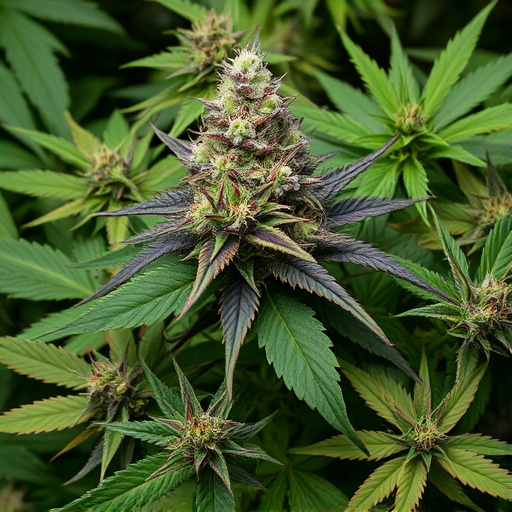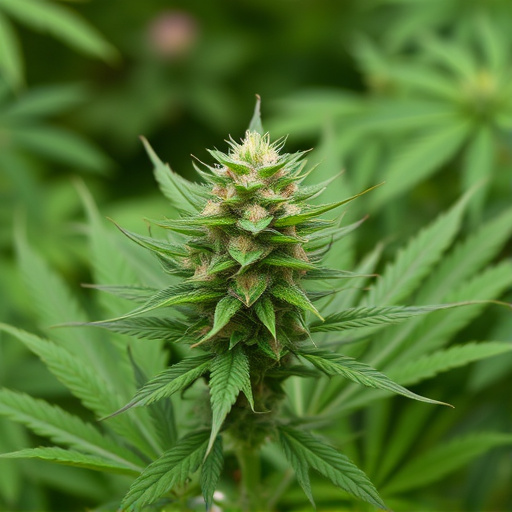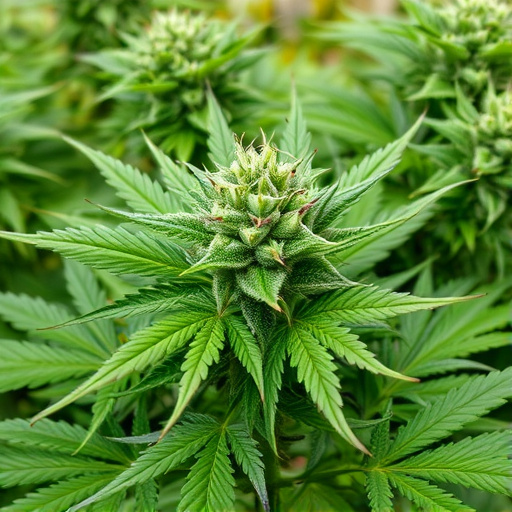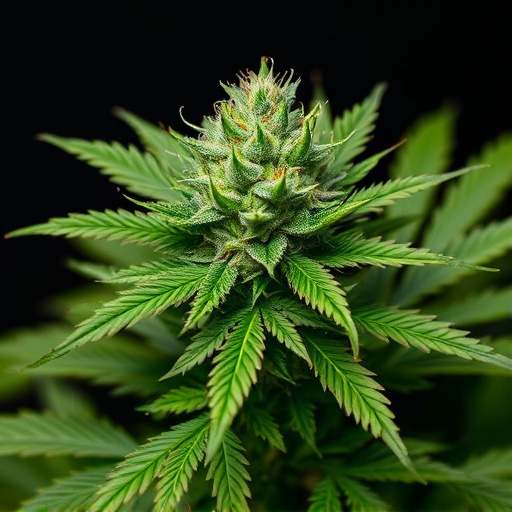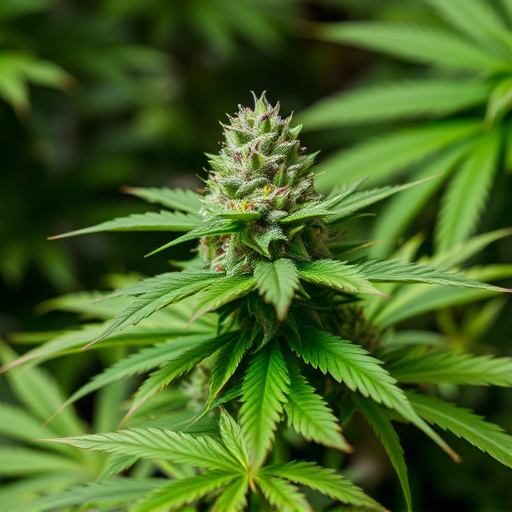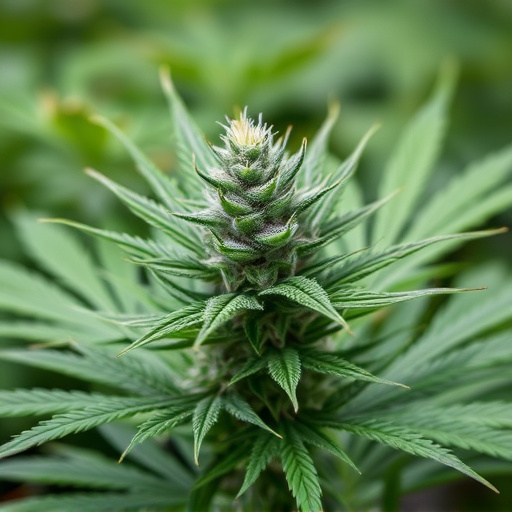The distinctive smell of cannabis is primarily due to terpenes and cannabinoids, volatile compounds that influence its aroma and therapeutic effects. Myrcene, limonene, and pinene are key terpenes with specific scents and potential health benefits. Cannabis sativa strains offer a variety of scents, from earthy to fruity, driven by unique terpene and cannabinoid combinations, catering to preferences and boosting market appeal.
Discover the enchanting world of cannabis aromas! Cannabis flower exhibits a strong scent due to its complex chemical composition. This article explores the intricate balance of terpenes, responsible for the diverse ranges of smells, and cannabinoids that enhance these unique fragrance profiles. We delve into the captivating varieties of cannabis sativa strains, each boasting distinct scents that cater to varied preferences. Uncover how these attributes contribute to the allure and versatility of cannabis in its many forms.
- The Chemical Composition of Cannabis: Terpenes and Aromas
- How Cannabinoids Contribute to the Unique Smell
- Exploring Sativa Strains: Varieties and Their Distinct Scents
The Chemical Composition of Cannabis: Terpenes and Aromas

The distinctive smell of cannabis is largely due to its unique chemical composition, particularly the presence of terpenes. Terpenes are volatile organic compounds (VOCs) responsible for the aroma and flavor of many plants, including cannabis sativa strains. Each cannabis strain boasts a distinct terpene profile, contributing to the wide range of scents and effects experienced by users.
Cannabis contains over 100 different terpenes, with myrcene, limonene, and pinene being among the most common. Myrcene is known for its earthy, musky scent and is often associated with sedative effects. Limonene offers a refreshing citrusy aroma while also having potential mood-lifting properties. Pinene has a pine-like fragrance and is believed to have anti-inflammatory and bronchodilatory benefits. The interaction between these terpenes and the primary psychoactive compound, tetrahydrocannabinol (THC), creates the diverse aromas and therapeutic effects found in various cannabis sativa strains.
How Cannabinoids Contribute to the Unique Smell
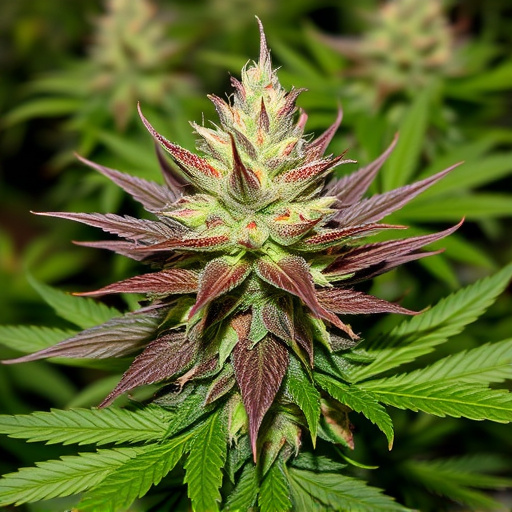
Cannabis flowers emit their distinctive aroma due in large part to the presence and interaction of various cannabinoids, most notably tetrahydrocannabinol (THC) and cannabidiol (CBD). These compounds are responsible for not only the plant’s psychoactive effects but also its unique olfactory profile. When cannabis sativa strains are cured and dried, these cannabinoids volatilize, releasing into the air tiny particles that our noses detect as the characteristic cannabis scent.
Each cannabis strain possesses a distinct cannabinoid makeup, which significantly influences its aroma. Terpenes, another crucial component, further enhance and modify the smell by interacting with cannabinoids. This complex interplay of cannabinoids and terpenes creates the diverse range of scents found in different cannabis sativa strains, from earthy and floral to spicy and fruity notes.
Exploring Sativa Strains: Varieties and Their Distinct Scents

Cannabis sativa strains are renowned for their diverse and distinctive scents, each offering a unique aromatic experience. These varieties have captured the interest of many enthusiasts due to their ability to impart specific effects and create a tailored sensory journey. One of the key reasons behind the strong scent of Sativa strains lies in their chemical composition, particularly the presence of terpenes and cannabinoids. Terpenes, such as myrcene, limonene, and pinene, contribute to the characteristic aromas, with each terpene offering a unique olfactory profile. For instance, myrcene is often described as earthy and musky, while limonene provides a refreshing citrusy note.
When it comes to cannabis sativa strains, their scent can vary widely. Some varieties may exhibit floral and fruity notes, evoking images of fresh cut flowers or tropical fruits. Others might present more terrestrial and woody aromas, reminiscent of forest walks or pine trees. This diversity in scent profiles not only caters to individual preferences but also adds to the allure and market appeal of different cannabis sativa strains.
Cannabis’ distinctive smell is a result of its complex chemical composition, primarily terpenes and cannabinoids. Terpenes, aromatic compounds, contribute significantly to the variety of scents across different cannabis sativa strains. These strains offer a unique experience, from uplifting Sativas known for their citrusy or floral notes to Indicas with earthy or pungent aromas. Understanding these chemical components sheds light on why cannabis flowers exhibit such strong and varied smells, catering to diverse user preferences.






